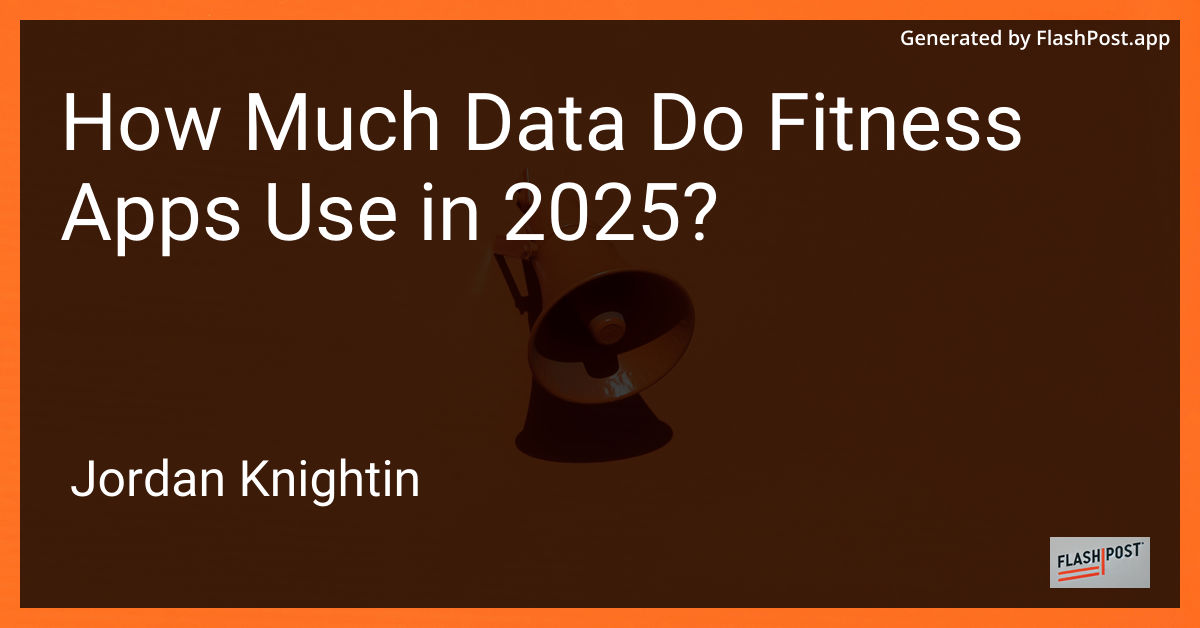

How Much Data Do Fitness Apps Use in 2025?
In today’s data-driven world, fitness apps have become essential tools for anyone looking to maintain an active lifestyle. With advancements in technology, these apps have become even more sophisticated, providing users with real-time analytics, personalized workout plans, and seamless integration with wearable devices. However, as these apps become more feature-rich, a common question arises: How much data do fitness apps use in 2025? Let’s explore this topic in detail.
The Growing Usage of Fitness Apps
As of 2025, fitness apps are more popular than ever. With millions of users worldwide, these apps offer a comprehensive suite of features, including GPS tracking, heart rate monitoring, and integration with AI technology for personalized workout recommendations. The effectiveness of a fitness app often depends on its ability to collect, process, and analyze data. This necessity leads to varying degrees of data usage, which can significantly impact your device’s data plan.
Data Usage: Factors to Consider
1. Type of Activities Tracked
The data consumption of a fitness app largely depends on the types of activities it tracks. For instance, apps that monitor your daily step count might use minimal data as they primarily rely on phone sensors. In contrast, apps that utilize GPS for tracking outdoor activities such as running or cycling often consume more data.
2. Frequency of Syncing
Another crucial factor is how frequently the app syncs with cloud servers or wearable devices. Apps that provide real-time analytics or constant health monitoring will likely use more data due to continuous syncing.
3. Additional Features
Modern fitness apps often include additional features such as video tutorials, social sharing, and challenge participation, which can impact data usage. Video content and real-time updates tend to use significant amounts of data compared to basic tracking features.
4. Inter-device Connectivity
The rise of IoT has led to increased device connectivity, allowing fitness apps to share information seamlessly with wearables and home fitness equipment. While this integration provides a more holistic view of one’s fitness journey, it may also lead to higher data usage.
Estimated Data Usage in 2025
Based on current trends and devices available as of 2025, the data usage of fitness apps can range from 5 MB to 100 MB per hour, depending on the factors mentioned above. Basic apps might consume as little as 5-10 MB per hour for simple tasks such as tracking steps or workout durations. However, data-intensive apps with features like video streaming and real-time GPS tracking can use up to 100 MB per hour or even more during extended sessions.
Limit Data Usage Without Compromising Features
-
Use Offline Features: Opt for apps that offer offline mode for activities such as indoor exercises.
-
Selective Syncing: Configure your app settings to sync data only when connected to Wi-Fi.
-
Optimize Video Quality: For apps offering video content, adjust the resolution for lower data consumption.
-
Regular Monitoring: Keep track of your app’s data usage through device settings to ensure you’re staying within your limits.
Conclusion
While fitness apps in 2025 come with advanced features that may increase data consumption, they also offer invaluable insights and motivation for users. By understanding and managing the data usage of these apps, you can enjoy their benefits without exceeding your data limits.
For additional insights, check out our related articles:
- How accurate are fitness smartwatches for calories?
- Best deals on fitness trackers
- How to create a personalized treadmill workout plan
By staying informed and choosing the right tools, you can effectively leverage technology to support your fitness journey.
